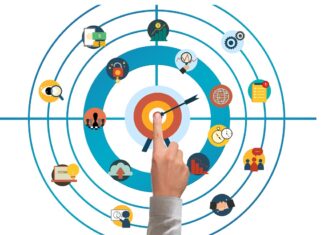In recent years, AI-driven adaptive communication tools have revolutionized the way businesses and individuals interact. These tools, powered by machine learning algorithms, are transforming communication systems by personalizing and enhancing how messages are conveyed across different platforms. Adaptive communication tools are becoming an essential component in businesses aiming to streamline operations, improve customer engagement, and create personalized experiences. The role of AI in adaptive communication tools is becoming increasingly vital, helping companies offer real-time, tailored communication strategies that meet the specific needs of users. As we dive into the world of adaptive communication, it’s important to explore how these tools leverage AI to create smoother, more effective interactions. Understanding the top 10 facts about AI in adaptive communication tools can shed light on their growing importance in both personal and professional contexts.
1. What Are Adaptive Communication Tools?
Adaptive communication tools refer to software and systems that dynamically adjust and modify the communication approach based on user behavior, preferences, and environmental factors. These tools utilize AI and machine learning algorithms to learn from data and adapt to specific communication needs. Whether it’s automated chatbots providing customer service, virtual assistants managing scheduling tasks, or email marketing campaigns tailored to individual users, adaptive communication tools can personalize interactions at an unprecedented scale.
With AI at the core, these tools process vast amounts of data, analyze user behaviors, and continuously improve their communication strategies. This means that over time, adaptive communication systems become increasingly efficient at predicting user needs and responding accordingly. Businesses, educational institutions, healthcare providers, and other organizations are utilizing these tools to foster deeper, more meaningful engagement with their audiences.
2. AI’s Role in Personalizing Communication
At the heart of adaptive communication tools is the ability to personalize experiences. AI plays a crucial role in understanding user behavior patterns and tailoring communication in a way that feels more human and relevant. Personalization goes beyond simply addressing users by their names; it includes predicting what information they need, when they need it, and how they prefer to receive it.
For example, a company’s AI-driven email marketing tool may analyze a user’s past interactions with emails and then customize the content based on their interests, past purchases, or search history. Similarly, customer support bots can modify their language and response time based on how urgent a customer’s issue is. As adaptive communication tools continue to evolve, AI will only become better at mimicking human understanding and empathy, making communication feel more seamless and effective.
3. Real-Time Feedback and Adaptation
One of the most powerful features of adaptive communication tools is their ability to adjust communication in real time. AI enables these tools to assess ongoing interactions and make immediate changes based on the feedback they receive. For example, if a customer is not engaging with a chatbot or appears frustrated with a service, AI systems can identify these signals and alter their responses or escalate the issue to a human agent.
This real-time adaptation is essential for maintaining smooth communication and ensuring that users have a positive experience, whether they’re receiving customer service, browsing a website, or interacting with a mobile app. AI ensures that communication tools are always aligned with user expectations, helping to create an efficient and responsive communication environment.
4. Enhanced Customer Support through AI
Adaptive communication tools powered by AI are a game-changer for customer support teams. These tools can handle a wide range of tasks, from answering frequently asked questions to troubleshooting technical issues. The real benefit lies in the ability to scale customer support interactions. By utilizing AI, businesses can offer round-the-clock customer support that is both efficient and personalized.
Smart AI algorithms can analyze customer inquiries in real-time, offer personalized responses, and even provide proactive solutions before customers ask for help. Additionally, AI systems can monitor ongoing conversations to ensure that agents are providing accurate and helpful information. When customers experience immediate, relevant assistance, they are more likely to remain loyal to the brand.
5. Automating Content Creation and Distribution
Adaptive communication tools powered by AI can automate the process of content creation and distribution. This is especially useful in areas such as email marketing, social media management, and content creation for websites. AI-driven tools can generate personalized content for individual users based on their browsing behavior, preferences, and demographic information.
For example, a business can use an AI-powered communication tool to create customized social media posts or blog articles that align with a customer’s interests. It can also optimize the timing and frequency of content delivery, ensuring that users receive relevant information at the most appropriate time. This automation reduces the need for manual input, saves time, and helps marketers create more engaging and targeted campaigns.
6. Improving Accessibility and Inclusivity
Adaptive communication tools are also enhancing accessibility for individuals with disabilities. AI enables systems to adapt communication methods to meet the specific needs of users. For example, AI can be used to translate text into speech for those with visual impairments or generate real-time captions for individuals with hearing difficulties. By tailoring communication to the needs of diverse audiences, businesses can ensure that their services are more inclusive.
Furthermore, AI-driven adaptive communication tools are making it easier for people to interact with technology. Voice assistants, for instance, enable hands-free communication, allowing individuals to perform tasks without needing to physically interact with devices. These advancements are playing a significant role in making technology more accessible to people from all walks of life.
7. Data Security and Privacy Considerations
As adaptive communication tools rely on data to personalize interactions, data security and privacy become critical concerns. AI systems that power these tools must be equipped with robust security protocols to ensure that sensitive user data is protected. Businesses must be transparent about how they collect, store, and utilize customer data, and ensure compliance with privacy laws such as GDPR.
AI can also play a role in securing communications. By using encryption, AI systems can protect the integrity of data shared through adaptive communication tools. Additionally, AI-powered tools can detect unusual activity or potential security threats in real-time, helping to mitigate risks before they escalate into serious issues.
8. Enhancing Employee Productivity
AI-driven adaptive communication tools not only benefit customers but also enhance employee productivity. By automating repetitive tasks, these tools free up employees to focus on higher-level tasks that require human input. For example, AI can automate scheduling, reminders, or even customer service responses, allowing employees to dedicate more time to strategic activities.
Additionally, adaptive communication tools can assist employees by providing relevant information on demand, reducing the time spent searching for data or waiting for information from other team members. This streamlining of communication processes can significantly improve operational efficiency and overall productivity.
9. The Future of AI in Adaptive Communication
The future of AI in adaptive communication tools looks promising, with continuous advancements in machine learning, natural language processing, and user behavior analysis. As AI becomes more sophisticated, adaptive communication systems will become even more intuitive and capable of handling complex tasks. Businesses will be able to rely on these tools to create hyper-personalized experiences that are seamless, engaging, and efficient.
Looking ahead, we can expect AI-powered communication tools to become even more integrated into daily life. From smarter virtual assistants to more advanced chatbots and personalized marketing campaigns, adaptive communication tools will continue to evolve, offering new possibilities for businesses and consumers alike.
10. Key Takeaways
AI in adaptive communication tools is transforming how we interact with technology, making communication more personalized, efficient, and accessible. These tools are essential for businesses seeking to improve customer experiences, enhance employee productivity, and streamline operations. As AI technology continues to evolve, adaptive communication tools will only become more advanced, offering even more tailored solutions to meet the unique needs of users. Understanding the top 10 facts about AI in adaptive communication tools is crucial for staying ahead in the fast-paced, technology-driven world.























